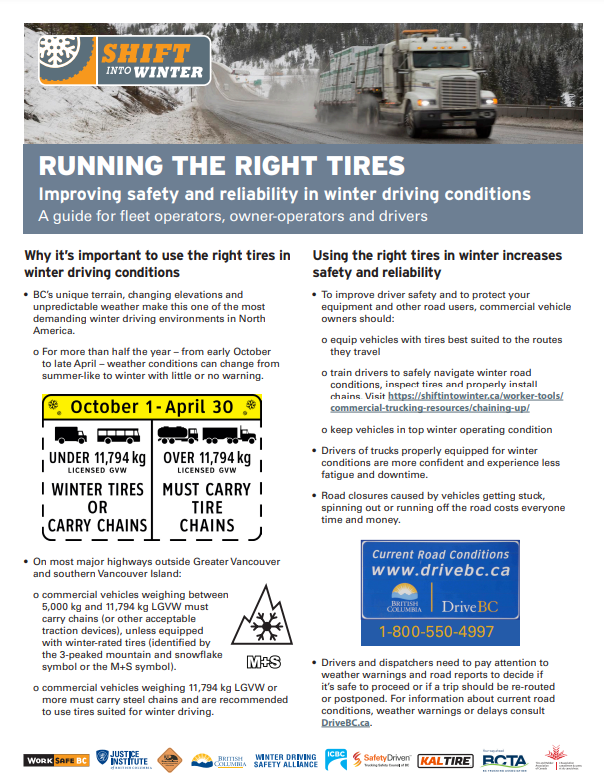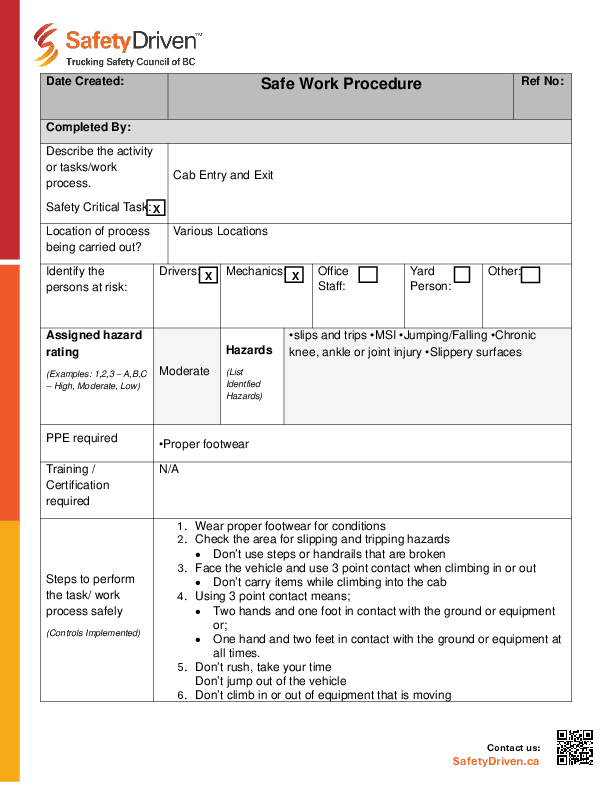Being Ready for Crossing the Border
It’s more important now than ever before.
The National Safety Code mostly pertains to Canadian regulations, but a lot of our regulations come from the USA’s Code of Federal Regulations. Many Canadian carriers have to cross the line frequently and are expected to be operating legally on both sides of the border. This means maintaining NSC hours on the Canadian side and American hours on the US side. The US side requires the electronic logging devices (ELDs).
Hours on the US side are as follows:
Cycle 1: 60 hours in seven days
Cycle 2: 70 hours in eight days
It is not up to the driver to declare the cycle; the categories are regulated. If the carrier is operating five days a week, then the driver is on Cycle 1. If the carrier is operating seven days a week, then the driver must be on Cycle 2. Most Canadian carriers are considered seven-day operators and therefore must comply to Cycle 2 regulations. Drivers must also have 30-minute breaks every eight hours. A good rule is to take the break between the sixth and eighth hours to ensure that there is a break registered with eight hours, no matter how the work day is broken up. A driver can only drive eleven hours of the fourteen on duty. The driver must have ten consecutive hours off every day (this can be broken up, but this is complicated and does not allow the driver down time).
The reset for the eight day cycle is 34 hours in the US which is shorter than the required 36 hours in Canada. If a driver is crossing the line frequently, a good rule is to drive according to American rules and reset using Canadian rules. That way, the driver can avoid being short on either set of regulations.
The other requirements are trip inspection reports and drug and alcohol testing. The drug and alcohol testing is mandatory for all companies that haul into the US regularly. The drivers have to be on a random screening regimen.
Make sure you understand all the rules for driving into the USA as a commercial driver. Some basic rules all Canadians must know:
• a driver must be at least twenty-one-years old to operate a commercial vehicle on Interstate Highways
• A driver cannot have any alcohol in the vehicle, including for personal use unless it is registered on the manifest
• The driver must be on the proper cycle when crossing the border and have enough hours left in the day to actually get somewhere
There are several things that a driver must know to cross the line regularly, but the carrier is expected to know also, including making sure that the drivers are actually allowed to be in the USA (ie. no outstanding warrants for unpaid fines) and making sure that the drivers are all on the random drug and alcohol testing program.
A good carrier needs to study the updates across the border all the time and be up-to-date on the regulations. Frequent the FMCSA Federal Motor Carrier Safety Administration website to maintain current knowledge.
Crossing the border does not have to be a challenge as long as the carrier stays current and educates their drivers.
For more information about the National Safety Code visit our website at www.safetydriven.ca
Latest Resources
Running the Right Tires
Road Safety at WorkUse this guide for fleet operators, owner-operators, and drivers to help improve safe ...
Safe Work Procedure: Cab Entry & Exit
An Employer can make use of a safe work procedure (SWP) by training new and existing ...

